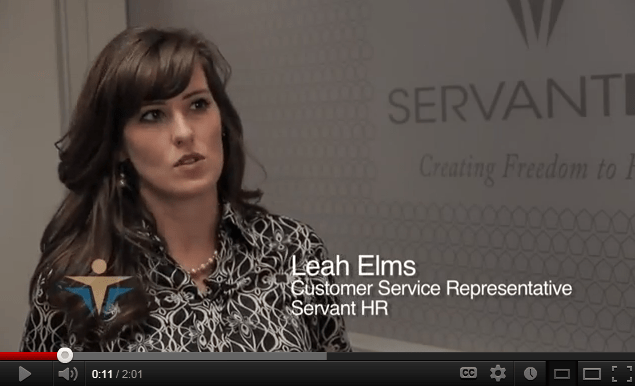![Healthcare Reform: 3 Major Changes for Business Owners in 2013]()
by Jeff Leffew | Employee Benefits, Legal Compliance

Through 2018, business owners will have new requirements to fulfill as part of the Obama administration’s healthcare reform or Affordable Care Act (ACA). The law spans 2,409 pages. In my experience with business owners, they typically aren’t interested in reading thousands of pages of legal details and spending an inordinate amount of time to learn the ins and outs of a reform. But it can be difficult for growing businesses to stay compliant because of the overwhelming bureaucracy, and triggers spurred by increasing employee numbers.
To keep things relatively simple, for 2013, here are three major HR-related requirements business owners need to fulfill to avoid getting into hot water.
1. Beginning March 1, 2013, employers must provide employees with written notice about their state’s health insurance exchanges.
If you follow the news at all, you have heard about health insurance exchanges. Just last week, the federal government extended individual state’s deadlines to make a decision about who would be setting up their exchanges: the individual state or the feds.
The tricky part about the ACA’s deadline, as you may have guessed, is that these exchanges likely won’t be in place by March 2013.
The exchange is a virtual marketplace that allows individuals or small businesses to purchase health insurance. It’s mandated that each state have its own exchange. If a state sets it up on its own, it is responsible for vetting out prospective private carriers to become part of the exchange. This calls for a review of each carrier to make sure they meet and maintain the required standards. Individuals can then go on the online site and get quotes for insurance.
The debate around exchanges is especially because the ACA says states have to carry out the health insurance exchange projects out of their own pockets. Many states have said they weren’t going to do it. Indiana, for one, is struggling with the choice.
2. On 2012 W2s filed in 2013, employers must report the value of employer-sponsored healthcare coverage for each employee.
For example, say I’m a dependent. My company pays $X and I pay $Y into my employer-sponsored benefits plan. The total value ($X+$Y) must now be included on a W2 starting next year.
No clear reason as to why we have to report this has been given. But a few things are sure. With this new requirement, insurance premiums will be more traceable, which relates to the tax value. The government currently knows our pre-tax contributions, but it doesn’t know the amount an employer is paying.
This requirement comes into play more clearly in 2014 when the so-called “play or pay” penalty takes effect. Essentially, if an employer of 50 or more employees doesn’t provide minimum health coverage and also a minimum employer contribution, the employer will pay a penalty. The W2 number in theory enables government regulators to make sure people are staying legal.
Employers of small businesses don’t need to be concerned with this rule — for now. Employers filing fewer than 250 W2s the prior year are exempt from further notice.
3. Flexible Savings Account limits to no more than $2,500 is effective on Jan. 1, 2013.
An FSA is an IRS-created program that allows employees enrolled in a qualifying high-deductible health plan (HDHP) to save for and pay for health-related things such as unreimbursed medical expenses. With an FSA, employees set money aside for impending medical expenses that may incur through regular contributions from their paychecks. When they spend money from their FSA, it is tax free. For example, an employee can choose to save $1,500 at the beginning of the year for their FSA. When that employee goes to the doctor’s office or pharmacy and uses the FSA card, they don’t’ pay taxes on the expense.
Currently, there is no limit on the amount an employer may contribute to an FSA, and generally the employee either uses the money or loses it.
The big advantage of FSAs for employers is they provide a tax shelter. With the cap on the amount that can be contributed, this tax shelter is diminished. In general, a disadvantage of FSAs for employers is that if an employee used the maximum amount of his FSA amount within the first few months of the calendar year and then quit his job, the employer is the big loser. On the flip side, if the employee elects $1,500 and just uses $500 for an entire year, the employer wins by enjoying the tax shelter FSAs provide.
Broader repercussions for employers
Because of healthcare reform and its Medical Loss Ratio provision, there’s a push by insurance carriers to lessen or eliminate commissions for their brokers. With the MLR, health plans have to provide rebates to employees if employers’ percentage of premiums spent on reimbursement does not meet the minimum standards for a given plan year. If an employer gets caught spending less than the standard, they have to reimburse by actually writing checks to the employees.
As a result, carriers are looking for ways to cut costs. In the near future, commissions for brokers are going to look a lot different and, in some cases, are going away. The danger for employers is if you don’t have someone consulting or advising you and your employees, you are the one who is at risk. And with tougher, different rules, you need someone to hold your hand and guide you through the implementation of the healthcare reform.
Unique thing about Servant HR is we automatically have all the data we need to take the steps required to satisfy the ACA requirements. A traditional broker, for example, doesn’t have access to payroll. He can’t do the pay-or-play analysis. We have much more access and abilities.
In the future, we will also see a shift to moving full-timers to part-time work. There will be a huge part-time market develop as employers begin to feel the pains of ACA rules and discover ways to avoid them. Employers have to figure out how to migrate through this landmine.
 Watch this video to see Servant HR’s Leah Elms cover “Three Things Every Employee Should Know About Healthcare Reform.”
Watch this video to see Servant HR’s Leah Elms cover “Three Things Every Employee Should Know About Healthcare Reform.”
![Healthcare Reform: 3 Major Changes for Business Owners in 2013]()
by Mike Yoder | Employee Benefits, Legal Compliance, Outsourcing, Payroll

When you have an annual checkup, your doctor gathers a lot of information. Height and weight are measured. Your blood pressure and pulse are taken. Blood may be drawn. You answer questions about family history, current diet and medications. The doctor checks your ears, mouth, neck, heart, lungs, stomach, joints, spine, muscles and skin.
You and your doctor know that these clues work together to determine your overall health. Your doctor also uses these clues to recommend changes in your lifestyle to keep you on the healthy track. You can’t separate your diet from your blood pressure from your weight. You have to have an understanding of how these parts work together to take the best care of yourself.
Human resources works the same way. You know that benefits, payroll and risk management are part of an employer’s HR responsibilities, but if they aren’t considered together to see how the parts affect one another, your business won’t be as healthy as it could be. If your HR service providers aren’t working together to diagnose HR problems and detect HR opportunities, your business suffers. A full-service PEO or Professional Employer Organization is like a doctor asking all those questions. Consider the many services and service providers who may be working on your HR from afar, never collaborating or sharing information to make your business healthier.
HR Management
In small or medium-sized businesses, in-house staff people who wear multiple administrative hats are often the ones managing human resources. In these cases, the question becomes, “What level of training or expertise does your staff person have in dealing with tough HR matters?” It’s an important question to consider because human resources management isn’t as obvious or popular as other HR areas. All business owners know they have certain obligations associated with payroll and tax liability. But they might not realize there are actually more compliance issues related to HR management than payroll and tax. The reality is that a trained HR professional can help employers avoid costly missteps related to EEOC, DOL, FMLA, USERRA, PPACA, ERISA, GINA and the rest of the alphabet soup of HR compliance and risk.
HR management becomes more complicated as your business grows. With more employees comes more obligations. If your business has reached a certain level, you may choose to hire a professional with a PHR or SPHR certification. While this may be a smart choice for larger businesses, many small and medium-sized companies can’t afford to hire a full-time HR professional.
Benefits
Most businesses work with a broker to handle the benefits part of their human resources. A broker offers the employer a choice of different insurance benefits. Typically, the broker passes along some numbers to an administrative person on a yearly basis, and that person is tasked with understanding the benefits and passing along that information to any new employees or current employees who have become eligible for benefits over the course of the year.
Ideally, a broker should have an understanding of the different benefits plans available and the level of quality of different carriers. A broker should also understand the culture of your business so he or she can match that with the available benefits. Your benefits should be attractive to employees and a good fit for your organization so that your business can use the options as recruitment and retention tools.
Unfortunately, things like benefits have become so commoditized that the opportunity to maximize what benefits can do for you and your business is being overlooked. Many brokers have tried to add services on the front end with increased communication and hand-holding at the employee level in order to compete in a marketplace that offers a more holistic approach, but they often fall short.
Payroll
Most businesses use some sort of payroll service to make sure employees receive the correct amount of pay on time, and to make sure related tax issues are handled appropriately. When a company chooses to handle payroll in house, it’s often a control issue by the ownership in which someone doesn’t want any confidential information leaving the company. Another reason for handling payroll in house is in a situation where the accounting is atypically complex. For example, if a manufacturer does a lot of piecework, or an engineering or construction firm needs to track how an employee is spending his or her time on projects to determine their contribution to the bottom line, an in-house software program customized to a particular pay setup might be the smartest choice.
Risk Management
At Servant HR, we often hear the misunderstanding that risk management pertains to only worker’s compensation and liability insurance. Employers are often getting this impression from commercial insurance brokers who — you guessed it — provide worker’s compensation and liability insurance. Employers can mitigate risk on a much broader level, and a PEO can often help businesses recognize these opportunities.
Some risk management-related niches cater to certain industries such as construction and healthcare, which require property and casualty insurance coverage. There is often a discount available to employers when they bundle this coverage, so cost savings are a big motivator for employers who may view insurance coverage as a necessary evil.
But things can be done to manage risk without buying up more insurance or bundling policies. This is where a PEO can offer guidance. Safety training can help minimize accidents. General job training can help employers ensure their employees are doing their jobs correctly. Making sure individual employees are classified appropriately helps employers apply the correct insurance to that employee. (Employees such as landscapers go under a certain code. But clerical employees in the office of a landscaping company don’t require the same coverage. A PEO can help you see these cost-saving opportunities.) Employers can follow up with claims to be sure employees who claim they are hurt are indeed hurt. Having policies in place that protect you as an employer is the best way to manage risk, which requires the expertise of an HR professional.
Retirement Services
When most employers think about retirement services, the first things that to mind are 401(k) plans and the less popular pension plan. Companies typically use financial advisors to manage 401(k)s. These relationships often start on an individual level, with the business owner using a financial advisor for personal reasons. As the business grows and the need for retirement services arises, the business owner may turn to this same person to recommend a plan for employees.
The challenge in this way of approaching a 401(k) plan for your employees is the owner’s priorities might not line up with the business goals. The owner is looking for a way to get as much of his or her income sheltered from tax, but that shouldn’t be the only motivation. You must also consider that employees across many earning levels should enjoy the rewards of the plan. It is imperative to have someone in place who understands not only how a 401(k) plan works but also how your company is organized. Who is the best person to assume responsibility for the performance of the plan, for example? Is a 401(k) the best choice or is a business better suited to use an SRP (simple retirement plan)?
HR Management + Benefits + Payroll + Risk Management + Retirement Services
Part of the beauty of a full-service PEO such as Servant HR is that a PEO looks at all of these parts of your human resources together so that your business can be as healthy as possible. We aren’t individuals working on services in silos. PEOs connect the dots of businesses’ HR issues. PEOs are set up to take care of employees from “birth to death,” or from the job application to the retirement party. Through the coemployment model, full-service PEOs also assume some of the risk associated with having employees.
The HR services PEOs provide are getting done in any size business in some way, shape or form with or without a PEO. Payroll has to get done, worker’s compensation matters have to be dealt with, and retirement benefits have to at least be considered. In many cases, businesses rely on some combination of different vendors and often in-house staff to carry out these tasks. While this may be an effective process in some situations, it’s not always the best direction for managing a company’s HR needs.
To find out if a PEO is right for your business, download our guide “Are You a Good Fit?”


by Loren Elms | Legal Compliance, Payroll
There you are, fearing the worst, afraid to check your mailbox, knowing that it is coming. You are already having financial problems, living paycheck to paycheck, struggling to pay the bills, but you know your situation is about to become a lot worse. Then the day finally comes, and you open the letter that contains the phrase you have been dreading: “garnishment of wages.”
Anyone in this position will likely have many questions: Can they really take my paycheck? How much can they take? Will I lose my job when my employer finds out? Is there anything I can do about it? The answers below may help you understand your rights and what to expect if you find yourself facing a wage attachment.
What is a wage garnishment?
Wage garnishments typically result from unsecured debt (such as credit cards) that has gone unpaid and ignored, or from delinquent tax situations or back-owed child support. A creditor or debt collection agency can file a lawsuit as a last ditch effort to recover an unpaid debt. If the court rules in favor of the creditor, a judgment may be issued that requires an employer to garnish (or “attach”) the debtor’s wages, sending a portion of each paycheck to the creditor.
How much can they take?
The amount of earnings that can be garnished in a work week or pay period is restricted by Title III of the Consumer Credit Protection Act (CCPA). If a pay period covers more than one week, weekly pay calculations must be used to determine the amount garnished. The amount is typically the lesser of:
1.) 25% of an employee’s “disposable earnings” (money left over after regular taxes are withheld), or
2.) the amount that disposable earnings are greater than 30 times the federal hourly minimum wage
Example:
If an employee’s disposable earnings are $217.50 ($7.25/hour x 30 hours) per week or less, there can be no garnishment. If disposable earnings exceed $217.50 but are less than $290.00 ($7.25/hour x 40 hours), any amount over $217.50 is subject to garnishment. A maximum of 25% can be garnished if disposable income is $290.00 or higher. (Example provided by US DOL website.)
Wages may not be garnished by more than one creditor at a time unless the primary garnishment does not take the full 25% allowed by law. (These garnishment restrictions do not apply to certain bankruptcy court orders or debts due for federal or state taxes.)
Child or spousal support orders are always given priority over any other wage garnishment. Federal law for child support and alimony allows up to 50% of disposable income to be garnished if an employee is supporting another spouse or child, or 60% if not supporting another spouse or child. An additional 5% can be garnished for support payments that are 12 or more weeks in arrears.
Can I lose my job over this?
Employees are often embarrassed when faced with garnishment, because it means that their employer will now be made aware of their financial situation. The CCPA does protect an employee from being fired because of a single wage garnishment; however, in some states, that protection goes away if more than one garnishment occurs within a 12-month period.
What can I do about it?
If you are facing a debt that you are struggling to pay, the best plan of action is to act early and reach out for help. Speak to your creditors, work out a payment arrangement and stick to a repayment plan. A counseling agency may also be able to help you negotiate lower payment arrangements with a creditor. State law requires creditors to provide adequate notice of any pending legal action, but once a judgment has been issued and the payment arrangement is set by the court, your options will be very limited.
If you have already received notice that your employer has received an order to garnish your wages, you may be upset or angry. But it is important for you to understand that your employer is obligated to comply and garnish your wages according to the legal order. If you have already made other arrangements for repayment of the debt, contact your creditor directly or appeal to the court. If the amount being garnished is causing undue hardship in paying other bills or properly providing basic needs for your family, you can hire an attorney and set up an appeal to the judge to reconsider the amount.
Remember, it is always better to tackle the issue early on and work out a way to satisfy your creditors before a wage garnishment is issued as a last resort.
This article is intended as general information and should not be used as legal advice. Please visit the Department of Labor’s Wage and Hour Division page or call 866-4USWAGE for more information.

by Jeff Leffew | Legal Compliance
By Jeff C. Leffew, Founder and President
Remember the posters you had in your room when you were growing up? Not to be outdone by Star Wars characters, famous quarterbacks and rock bands, your federal and state governments are continually working hard to make sure you have plenty of posters hanging on your walls. Required notices about minimum wage, anti-discrimination laws and various other regulations frequently change, requiring new or modified posters. Do you have the right posters?
- In 2010, there was a major change related to the federal GINA law that required new language — and for many, a new poster. The Genetic Information Nondiscrimination Act of 2008 prohibits genetic information discrimination in employment.
- Effective January 31, 2012, new posters relating to unions and the National Labor Relations Act are required. If your company has a website, you will also be required to provide a web link to the poster on your site.
- There are also often new state-specific requirements that you may need to address. Servant HR stays on top of these state-by-state issues. If you have any questions about your specific requirements, please contact us.
We aren’t promising they’ll be as popular as your Star Wars posters, but rest assured that Servant HR will be working with its partner employers to ensure compliance with the new posting rules.
 Watch this video to see Servant HR’s Leah Elms cover “Three Things Every Employee Should Know About Healthcare Reform.”
Watch this video to see Servant HR’s Leah Elms cover “Three Things Every Employee Should Know About Healthcare Reform.”




